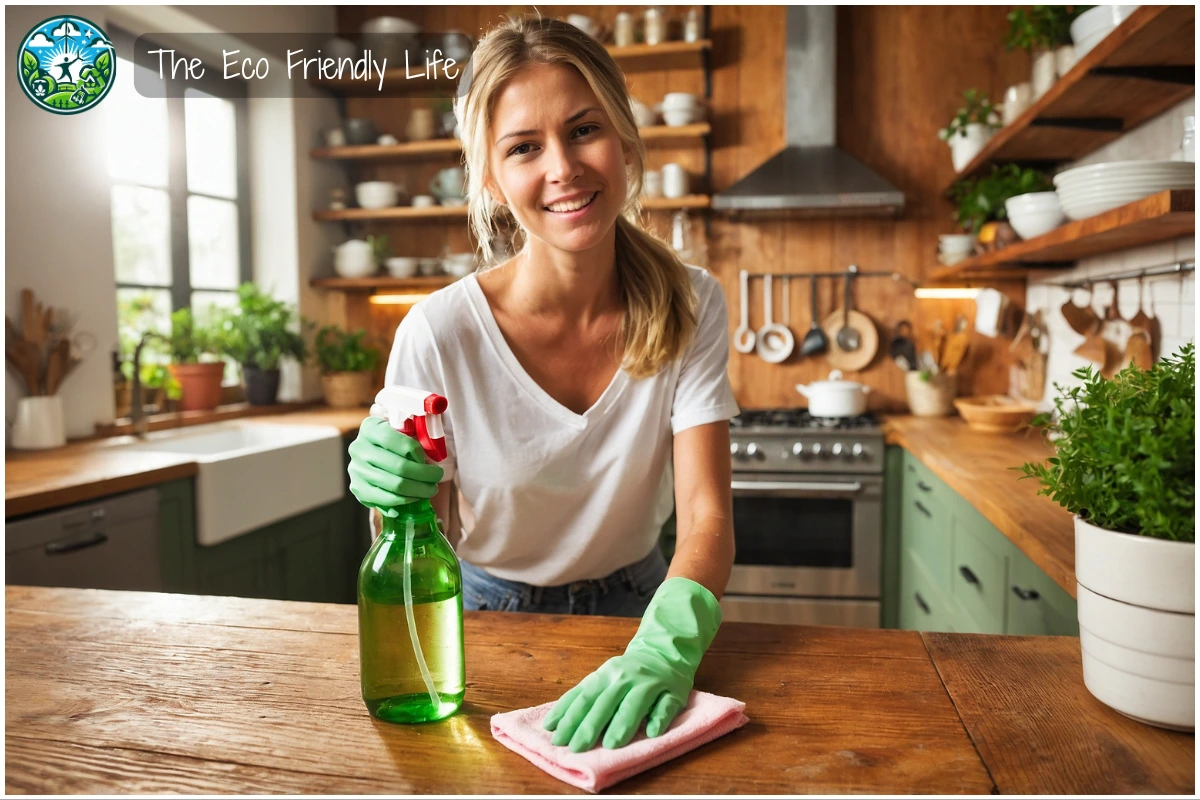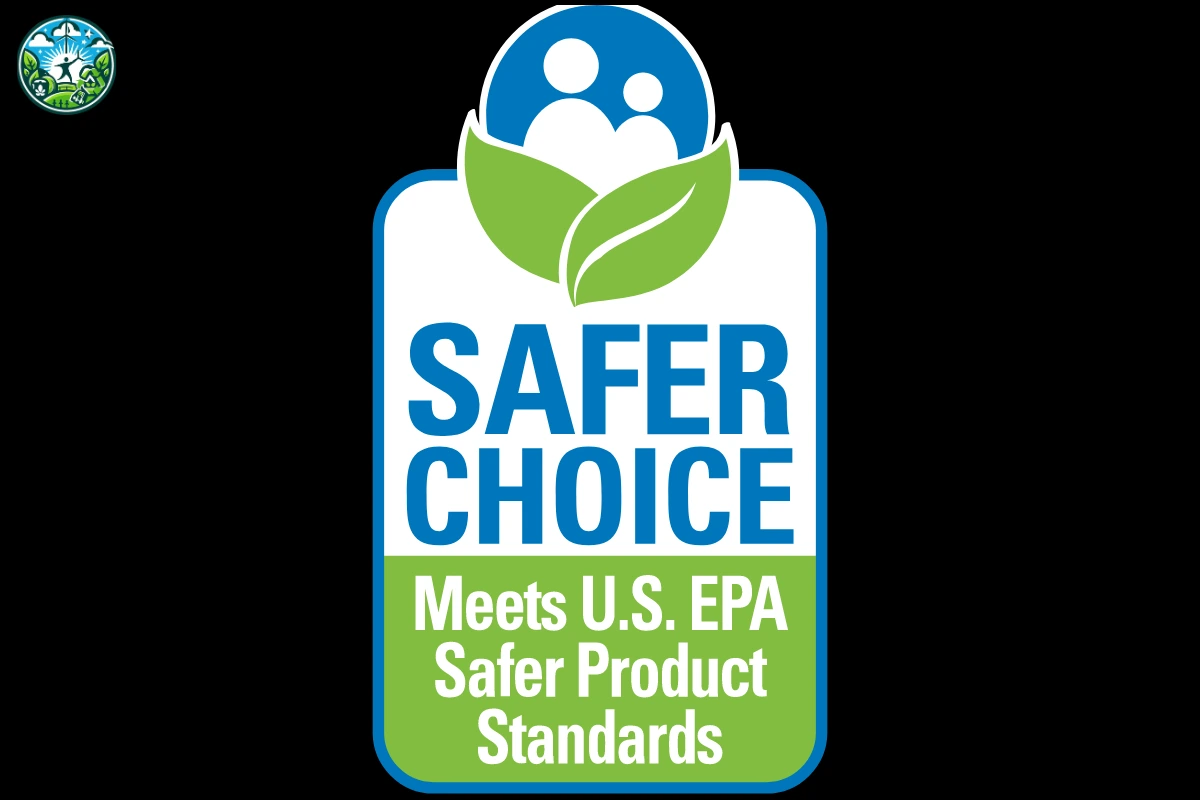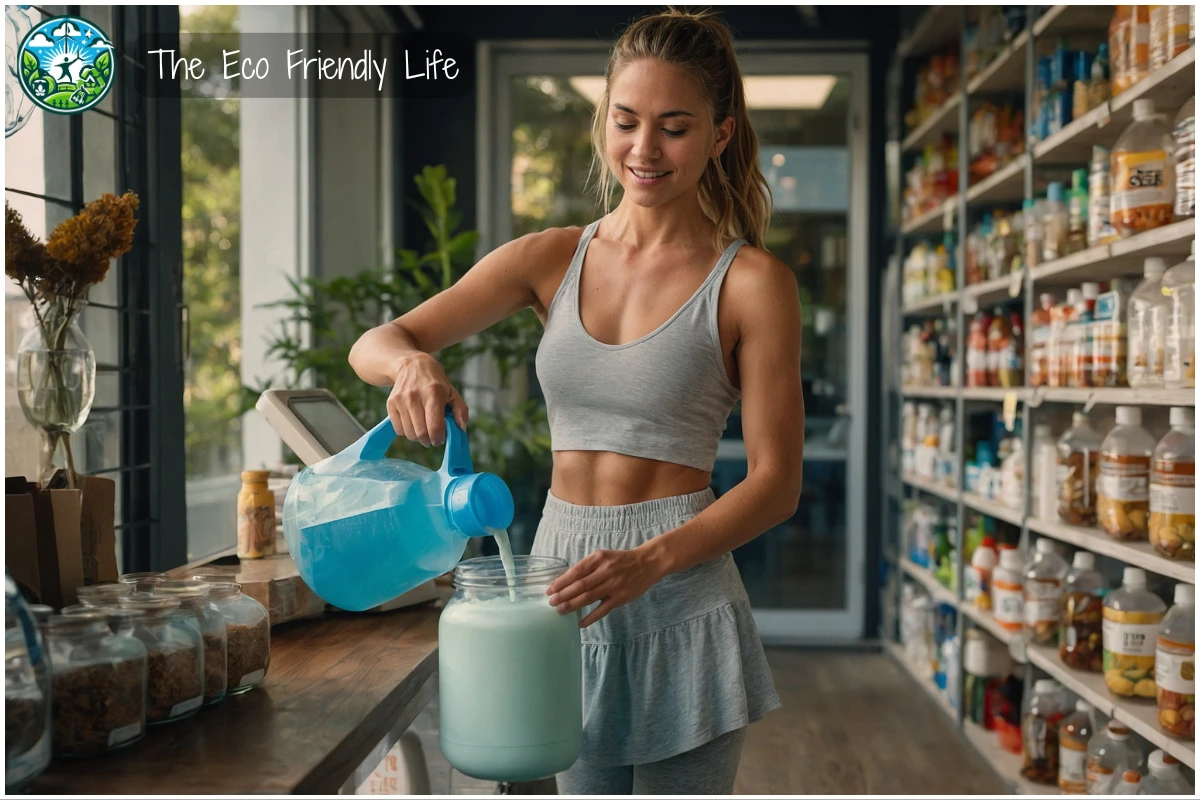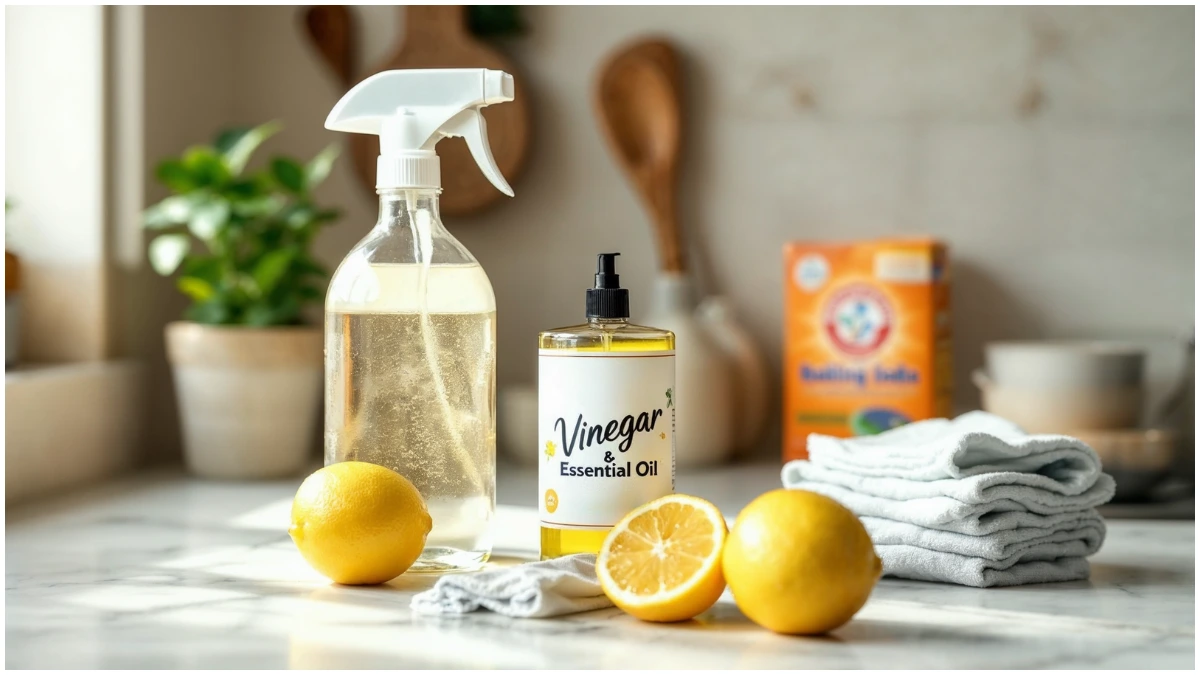Hi, it’s Al with you, and welcome back to The Eco-Friendly Life. Today, we’re diving into going green with your cleaning products. If you’ve ever wondered how to make your cleaning routine safer for both your health and the environment, you’re in the right place. We’ll explore everything from the basics of green cleaning to the benefits of using natural ingredients, and even how to identify trustworthy eco-certifications.
As we go through this guide, we’ll cover practical DIY solutions, discuss how to overcome common challenges when transitioning to green products, and highlight the positive impact these changes can have. So, whether you’re just starting out or looking to refine your green cleaning practices, join me as we make our homes cleaner, healthier, and more sustainable.

Introduction To Green Cleaning
Start your journey to green cleaning: Green cleaning is all about using products that are safer for both you and the environment. It’s a shift away from conventional cleaning products, which often contain harsh chemicals that can linger in the air and water. By switching to green products, you can make your home a healthier place.
Know the benefits of green products: Understanding the importance of green cleaning starts with knowing what it entails. Green products are made from natural ingredients and are free from harmful chemicals. This means fewer health risks, like respiratory issues or skin irritations. A study from Environmental Health Perspectives even found that switching to green cleaning products significantly reduces exposure to harmful chemicals like volatile organic compounds (VOCs).
Choose natural over synthetic cleaners: The difference between conventional and green cleaning products is in their composition. Conventional cleaners often have synthetic chemicals and artificial fragrances, which can harm the environment and your health. Green cleaning products, on the other hand, use natural ingredients like vinegar, baking soda, and essential oils, which are just as effective but without the harmful side effects.
Protect your health and the planet: Health benefits are a major reason to go green. Conventional cleaners can release toxic fumes that degrade indoor air quality, leading to potential health issues over time. By using green products, you’re making a choice that’s better for your lungs and skin. Plus, you’ll be supporting a cleaner planet by reducing the pollution that comes from chemical cleaners.
Make a difference with green choices: Environmental benefits shouldn’t be overlooked either. Green cleaning products are biodegradable and often come in sustainable packaging. Conventional cleaners can contribute to water and soil pollution, but eco-friendly alternatives minimize this impact. Switching to green products means you’re taking a step to preserve natural resources and protect ecosystems.
Common Green Cleaning Ingredients
Embrace natural ingredients for cleaning: Natural ingredients can transform your cleaning routine into something both effective and eco-friendly. Vinegar, baking soda, essential oils, lemon juice, and castile soap are some of the most popular and versatile options to consider.
Harness the power of vinegar: Vinegar is a powerhouse cleaner. Its acidity makes it excellent for breaking down grime and killing bacteria. Use it for everything from wiping down counters to tackling tough spots in the bathroom. Plus, it’s safe for the environment and won’t leave behind harmful residues.
Baking soda for gentle scrubbing: Baking soda is another must-have. Its mild abrasiveness makes it perfect for scrubbing surfaces without scratching them. It’s great for deodorizing and can even help remove stains when mixed with a bit of water to form a paste. Using baking soda is an easy, eco-friendly way to keep your home sparkling clean.
Add a natural fragrance boost: Essential oils add more than just a pleasant scent. Many essential oils, like tea tree oil and lavender, have antibacterial and antiviral properties. They can enhance your cleaning solutions and provide added disinfecting power while smelling great. Mix a few drops into your cleaning solutions for a natural fragrance boost.
Lemon juice for powerful stain removal: Lemon juice is nature’s bleach. The citric acid in lemons works wonders on stains, especially in the kitchen. It can cut through grease, brighten surfaces, and leave a fresh, clean scent. Plus, it’s completely biodegradable and safe to use.
Castile soap is powerfully gentle: Castile soap is an all-around cleaning marvel. Made from plant-based oils, it’s gentle yet effective. Use it for washing dishes, cleaning floors, and even in personal care. Because it’s biodegradable, it’s kinder to the planet compared to synthetic detergents.
| Ingredient | Primary Use | Benefits |
|---|---|---|
| Vinegar | General cleaning, grime removal, bacteria elimination | Safe for environment, leaves no harmful residues |
| Baking Soda | Gentle scrubbing, stain removal, deodorizing | Mild abrasiveness, non-toxic, effective stain remover |
| Essential Oils | Natural fragrance, added disinfecting power | Antibacterial, antiviral, adds pleasant scent |
| Lemon Juice | Stain removal, grease cutting, surface brightening | Biodegradable, leaves fresh scent, powerful natural bleach |
| Castile Soap | All-purpose cleaning, dishwashing | Biodegradable, plant-based, gentle yet effective |
Reduce your ecological footprint naturally: These ingredients not only perform well but also break down harmlessly in the environment, reducing your home’s overall ecological footprint. Embracing these elements means your cleaning routine can be just as effective without harmful chemicals. As expert Clement Choy (Grove Collaborative) notes, “Green cleaning is important as it encompasses the choice of products that focus on human safety and environmental safety as two key drivers, while minimizing any potential tradeoff on efficacy of the product.”
Certifications to Look For in Green Cleaning Products
Look for these trusted certifications: When choosing green cleaning products, it’s important to look for certifications that ensure safety and sustainability. Eco-certifications offer reassurance that the products you’re using meet specific environmental and health standards.
Trust the EPA Safer Choice label: One key certification to look for is the EPA Safer Choice label. Products bearing this label have been reviewed by the Environmental Protection Agency and meet stringent criteria for human and environmental health. These products are designed to clean effectively while minimizing impacts on the environment and human wellbeing.

Know your green labels matter: Green Seal and EcoLogo are two other credible certifications. Green Seal certifies products based on their lifecycle, from manufacturing to disposal, ensuring minimal environmental impact. EcoLogo, on the other hand, is an international certification that covers sustainably-produced goods and services.
Avoid greenwashing with real certifications: These certifications act as a trust badge, letting you know the product is truly green. Products that qualify for these labels are free from harmful chemicals that can pollute waterways and degrade air quality. Research shows that products certified by recognized eco-labels help mitigate water and soil pollution, contributing to healthier ecosystems overall.
Make informed choices with certifications: Relying on certified products can ease concerns about greenwashing—a marketing tactic where products are deceptively advertised as eco-friendly without meeting rigorous standards. Genuine eco-certifications prevent this by holding companies accountable to higher standards.
Empower yourself with green knowledge: Understanding these certifications means you can make informed decisions when shopping. Look for these labels next time you’re in the cleaning aisle to ensure you’re choosing the best for your health and the planet.
DIY Green Cleaning Solutions and Cost-Effectiveness

DIY cleaners save money and resources: Making your own cleaning products at home is simpler than you might think and can save you a considerable amount of money. With a few common ingredients that might already be in your kitchen, you can create cleaners that are both effective and eco-friendly.
Make an easy all-purpose cleaner: A basic all-purpose cleaner can be made with water, vinegar, and a few drops of essential oils for fragrance. Mix equal parts water and vinegar in a spray bottle, add 10-15 drops of your favorite essential oil, and you’re ready to go. This solution works great on countertops, windows, and many other surfaces.
Create a powerful scrubbing paste: Another easy recipe is a scrubbing paste using baking soda and water. This paste is perfect for tough stains in the kitchen and bathroom. Mix just enough water with baking soda to form a spreadable paste, then apply it to the stain and scrub with a sponge or brush.
Disinfect naturally with this mix: For a natural disinfectant, combine 2 cups of water, a half cup of white vinegar, and about 20 drops of tea tree oil. This mix is effective against bacteria and viruses, making it ideal for high-touch areas like door handles and light switches.
Save money with DIY cleaners: Homemade cleaners aren’t just good for the environment; they’re also gentle on your wallet. Most of the ingredients used in DIY cleaning solutions are inexpensive and can be found in bulk, providing long-term savings compared to commercial cleaners. Plus, you can customize your cleaners to suit your preferences, adding different essential oils for various scents or adjusting ingredients for specific cleaning tasks.
Safety first with homemade cleaners: When making and using homemade cleaners, safety should always come first. Clearly label your bottles to avoid any mix-ups, and store them out of reach of children and pets. Remember to avoid mixing certain ingredients, like vinegar and bleach, as this can create dangerous fumes.
By switching to homemade green cleaners, you’re not only cutting down on costs but also making a choice that benefits both your health and the environment.
Overcoming Challenges and Transitioning to Green Cleaning
Overcome challenges with practical strategies: Switching to green cleaning products comes with its own set of challenges, but they can be easily managed with some practical strategies. Common hurdles include availability, performance misconceptions, and an initial reluctance to change. Understanding these barriers will help you overcome them effectively.
Trust the effectiveness of green products: One of the most frequently mentioned challenges is the skepticism about green products’ effectiveness. Many people assume that natural products aren’t as powerful as their conventional counterparts. However, given the right ingredients and methods, green cleaning can be just as thorough. Starting with well-known natural ingredients like vinegar and baking soda can help demonstrate their effectiveness.
Find green products online or DIY: Availability is another issue. While green cleaning products are becoming more widespread, they might not yet be available at every local store. Online retailers and specialty stores often carry a more extensive selection. Additionally, making DIY cleaners using common household items ensures you always have your preferred products on hand.

Start small and expand gradually: Transitioning to green cleaning doesn’t have to happen overnight. Begin by replacing a few items at a time. Start with high-use products like all-purpose cleaners and dish soap. Gradually add more green products to your cleaning arsenal as you become comfortable.
Make green cleaning a lasting habit: Overcoming these challenges is a vital part of the transition. With patience and the right approach, you can make green cleaning a permanent and rewarding part of your routine, benefiting your health and the planet.
Conclusion
In wrapping up our beginner’s guide to going green with your cleaning products, it’s clear that small changes can have a big impact. By opting for natural ingredients and certified green products, you’re taking essential steps toward a healthier home and a cleaner planet. These choices not only protect your health but also contribute to preserving the environment.
As you continue on this green journey, remember that every product you switch out is a victory for both you and the Earth. Start with what you have, try some DIY solutions, and gradually expand your collection of eco-friendly cleaners. Your efforts are making a difference, one clean surface at a time.
Thank you for taking the time to explore green cleaning with me. I encourage you to begin implementing these tips today, starting with your most-used cleaning products. Until next time, continue to be eco-aware and motivate others to join you.


